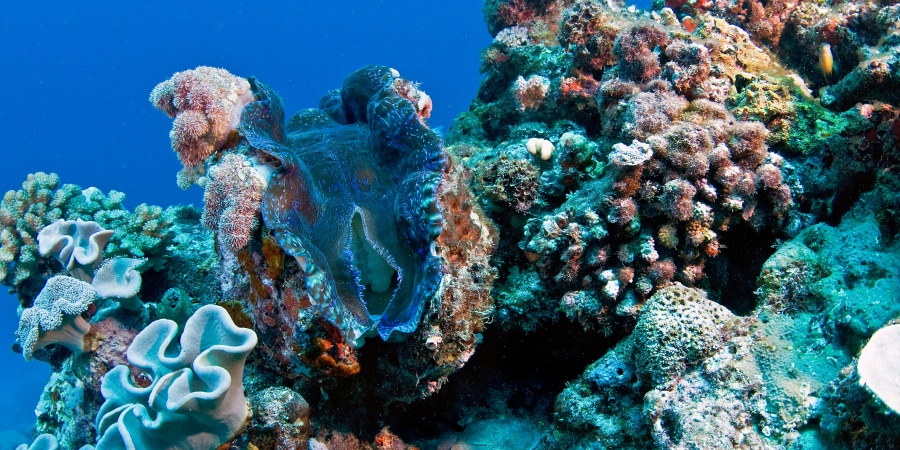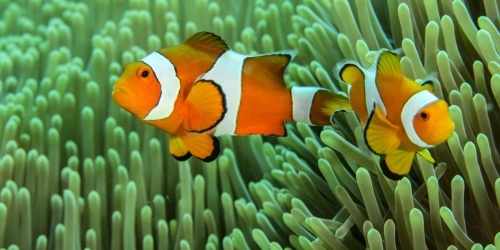
What is a giant clam? Stories of divers trapped by giant clams are legendary, but completely untrue. Five of the seven species of giant clam are found in the waters of north Western Australia. They include the largest of all clams, the giant clam (Tridacna gigas), whose shell can grow up to 140 centimetres long and weigh up to 260 kilograms. The others are the fluted giant clam (Tridacna squamosa), the burrowing or crocus clam (Tridacna crocea), the elongate giant clam (Tridacna maxima) and, least like the others, the horse-hoof clam (Hippopus hippopus).
What is a giant clam? Stories of divers trapped by giant clams are legendary, but completely untrue. Five of the seven species of giant clam are found in the waters of north Western Australia. They include the largest of all clams, the giant clam (Tridacna gigas), whose shell can grow up to 140 centimetres long and weigh up to 260 kilograms. The others are the fluted giant clam (Tridacna squamosa), the burrowing or crocus clam (Tridacna crocea), the elongate giant clam (Tridacna maxima) and, least like the others, the horse-hoof clam (Hippopus hippopus).
Where do they live? Giant clams live in all of the marine parks in Western Australia’s north-west, in protected shallow water areas on the shore side of coral reefs. The giant, burrowing and horsehoof clams are found only in the central Indo-Pacific. The elongate giant clam is found as far south as the Houtman Abrolhos Islands off Geraldton and extends to South Africa. The fluted giant clam is also widely distributed as far as Africa, Japan and south to the North West Cape.
What they eat and how: Giant clams filter water through their gills to extract tiny animals and/or minute plants for food. All giant clams also contain microscopic algae, known as zooxanthellae, in their mantles. The algae (tiny plants) produce food that can also be used by the clam. These microscopic plants contribute to the beautiful colours and patterns on the clam.
Threats: Thankfully, most Australians would not molest, harm or remove a living giant clam and they are generally left on the reef for all to enjoy. In some other countries, however, they are taken for their meat and shells.
Behaviour: Adult giant and horsehoof clams are so heavy that they do not need to attach themselves to the seabed. The other species have byssal threads to attach themselves to the seafloor or other surfaces. If they sense danger, such as a diver swimming overhead, the shell valves are clamped shut by a large muscle. The clams are capable of producing pearls that weigh up to six kilograms, but they lack the lustrous sheen of those produced by the pearl oyster.
Breeding: To breed, all the clams in one area release spawn into the water at the same time, which means they have more chance of being fertilised.
Conservation status: Giant clams are very common in many parts of northern Australia.
How you can protect the giant clam: If you see a giant clam please marvel at its beautiful appearance and colouring but leave it for others to enjoy. You may not collect shells, even those that are dead, from below the high water mark of most marine parks in WA, as they often provide homes for other marine animals.



























